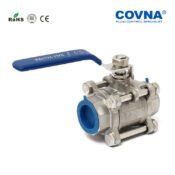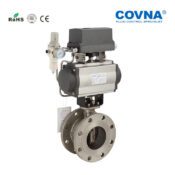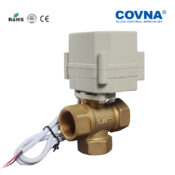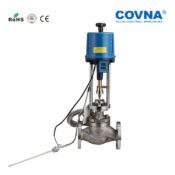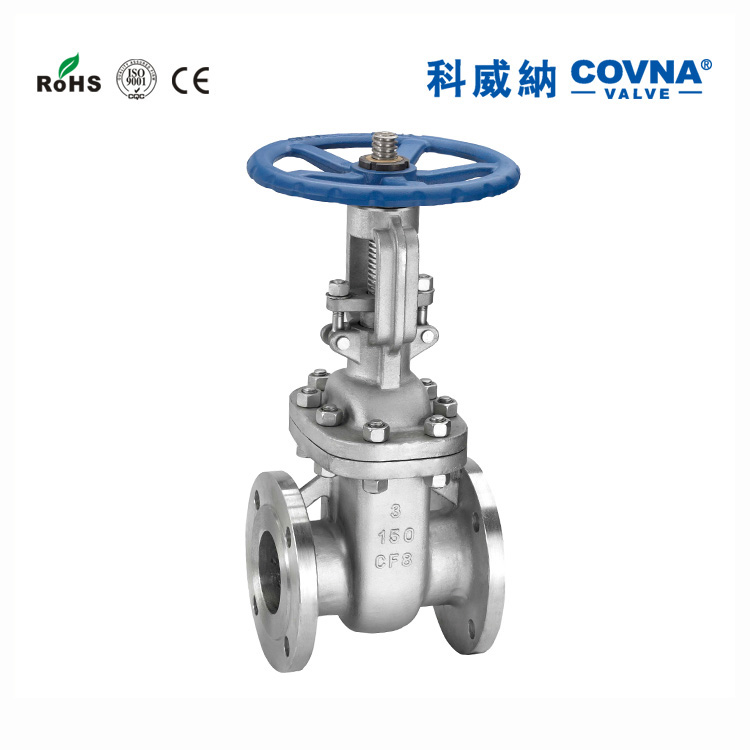
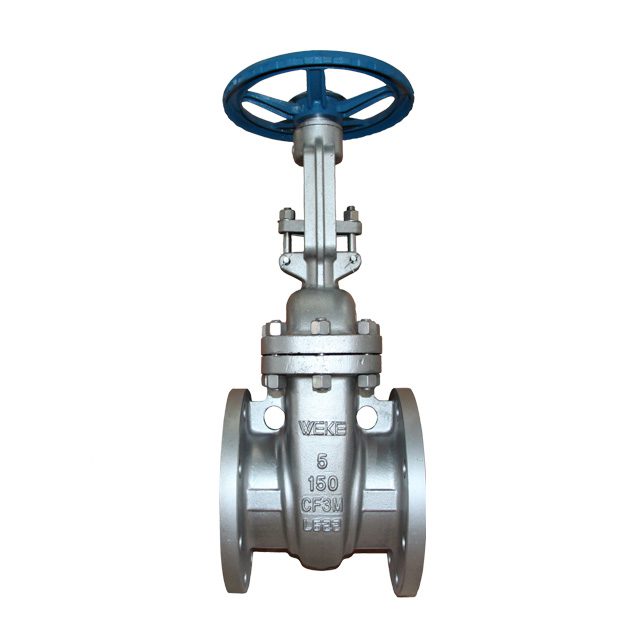
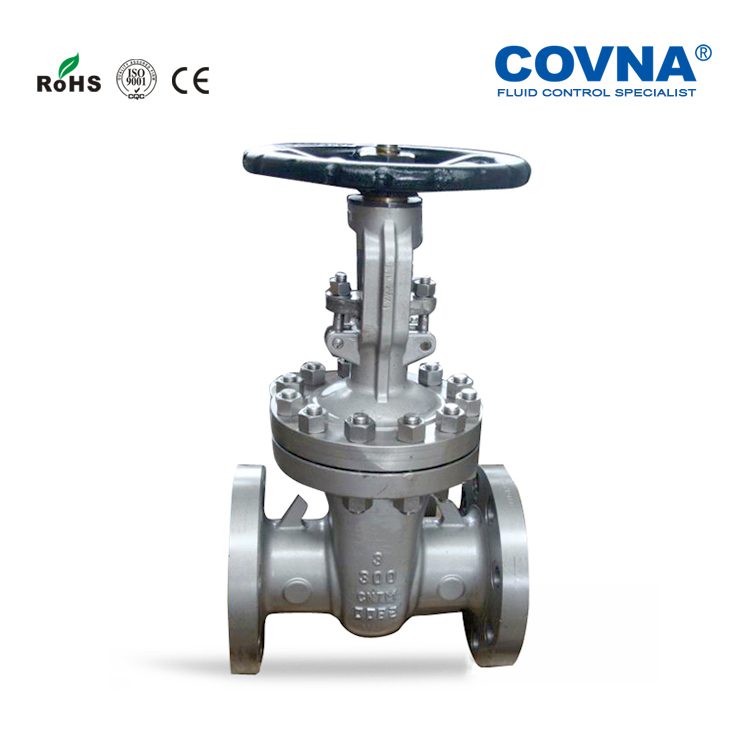

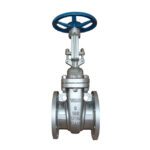
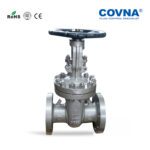
COVNA J11 Gate Valve
J11 Gate Valve
can fully open and closed, as the role of cutting off the media. Good sealing performance and easy to operate. Available in stainless steel, WCB, cast iron, cast steel for your choice. ANSI, JIS, DIN, GB standard are available to meet your pipeline.
As a gate valve manufacturer, we manufacture gate valve in rising stem type, non-rising stem type and knife gate valve for your project and help your project runs well.
Inquiry us to get the best price!
Model
- Size Range: 1/2 in to 16 in
- Material: Stainless Steel 304/316/316L, WCB or Cast Iron
- Pressure: 10 to 40 bar
- Medium Temperature:-10℃ to 425℃ (14°F to 797°F)
- Connection: Flanged
- Standard: ANSI, JIS, DIN, GB
 1. Technical Parameters Of COVNA Gate Valve:
1. Technical Parameters Of COVNA Gate Valve:
● Size Range: 1/2 in to 16 in (1/2″, 3/4″, 1″, 1 1/4″, 1 1/2″, 2″, 2 1/2″, 3″, 4″, 5″,6″,8″,10″,12″,14″, 16″) (Special size could be customized)
● Material: Stainless Steel 304/316/316L, WCB, Cast Iron
● Connection: Flange Connection
● Pressure: 16/25/40 bar
● Liquid Tmperature: -10 to 425℃
● Suitable Medium: Water, Oil, Gas, etc
● Flange Standard: ANSI, JIS, DIN, GB standard
● Types For Choice: Rising stem gate valve, non-rising stem gate valve, knife gate valve
2. Type Of Gate Valve For Your Choice:

3. Dimension
Dimension of ANSI Gate Valve:

Dimension Of JIS Gate Valve:

Dimension Of DIN Gate Valve:

Dimension Of GB Gate Valve:
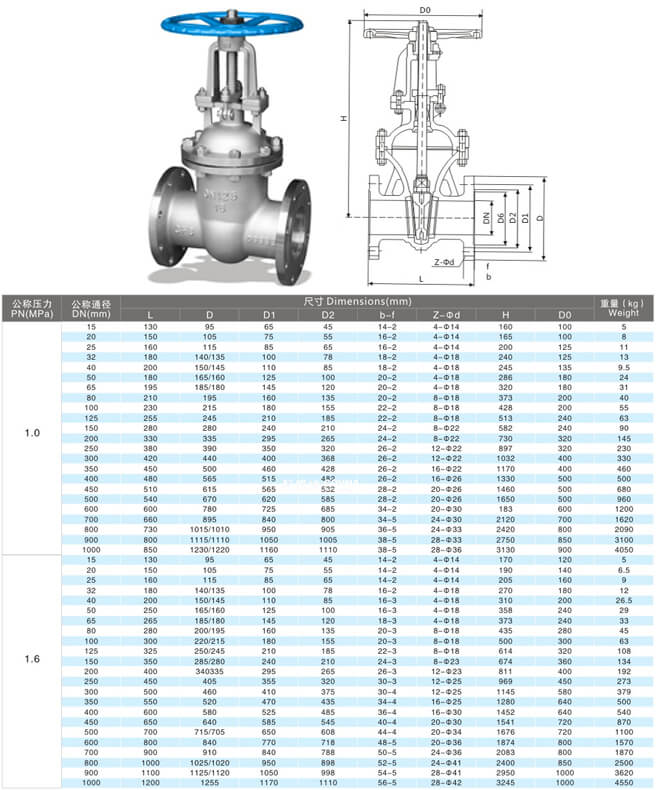
4. Material For Your Choice:

5. Types Of Actuators For Your Choice:

6. What Is Gate Valve?
The gate valve is a gate for opening and closing parts. The movement direction of the gate is perpendicular to the direction of the fluid. The gate valve can only be fully opened and fully closed, and cannot be adjusted or throttled.
Manually operated, electrically operated and pneumatically operated are available.
1.Oil and Gas Industry
Pipeline Flow and Pressure Control: Used for flow and pressure control in natural gas and oil pipelines to ensure stability during transportation.
Gas and Liquid Distribution Systems: Regulates the flow of gases or liquids, ensuring precise control under various operating conditions.
Automation of Distribution Systems: Used in refineries and natural gas processing plants to automate fluid distribution and regulate the reaction processes.
2.Chemical and Petrochemical Industry
Reactor Pressure and Flow Control: Used in chemical reactors, storage tanks, and other equipment to control pressure and flow, ensuring stability in the chemical reaction process.
Flow/Pressure Regulation: Regulates the flow of liquids or gases in processes such as polymerization, refining, and distillation to ensure efficient production.
Steam Control: Regulates the flow and pressure of steam in steam generators and distribution systems.
3.Water and Wastewater Treatment
Water Flow Control: Regulates water flow and pressure in water supply and wastewater treatment systems to ensure normal operation.
Gas and Chemical Additions: Regulates the flow of chemicals or gases (such as chlorine or ammonia) added during the water treatment process.
4.HVAC (Heating, Ventilation, and Air Conditioning) Systems
Temperature Control and Airflow Regulation: Used in air conditioning systems to regulate the flow of cooling or heating fluids to maintain the desired temperature.
Pressure and Airflow Regulation: Adjusts the flow and pressure of air in ventilation, air conditioning, and humidification systems to ensure indoor comfort.
5.Food and Beverage Industry
Liquid Flow Control: Precisely controls the flow of liquids in processes such as brewing, dairy production, and beverage bottling.
Temperature and Pressure Regulation: Regulates temperature and pressure during heating, cooling, and sterilization to ensure product quality and safety.
6.Pharmaceutical Industry
Precision Flow Control: Regulates the flow of liquids and gases in pharmaceutical manufacturing processes to ensure precise control of process parameters.
Pressure Control: Adjusts pressure in cleaning and sterilization systems to ensure stable system operation.
7.HVAC Systems
Airflow and Temperature Control: Controls the flow and temperature of air to adjust environmental conditions, ensuring comfort and energy efficiency inside buildings.
8.Steel and Metallurgical Industry
Gas Flow Control: Precisely adjusts the flow of gases such as oxygen and nitrogen during smelting and heating processes to ensure stable furnace temperatures and chemical reactions.
Cooling Fluid Flow Regulation: Regulates the flow of cooling fluids in cooling systems to ensure temperature control of equipment.
9.Thermal and Power Industry
Steam and Water Flow and Pressure Control: Regulates the flow of steam and water in boiler systems, heat exchangers, and power plants to ensure efficient operation of thermal systems.
10.Mining Industry
Slurry Flow Regulation: Adjusts the flow and pressure of slurry during transportation and separation processes to ensure efficient extraction and processing of minerals.

